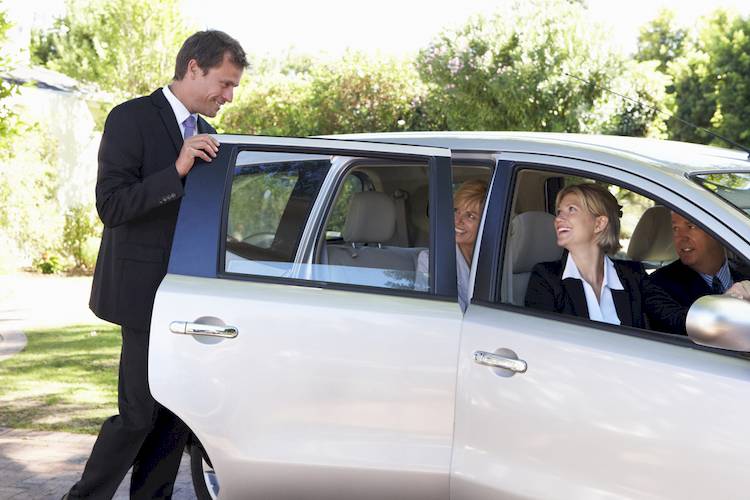

Car pool lanes were introduced to American road a few decades ago, and have been rising in popularity ever since. A large number of states have these lanes, and they cover more than 3,000 miles across the country. Many people rely on these lanes every day – especially commuters who are ride sharing with their coworkers through rush hour traffic. Car pool (or HOV, for High Occupancy Vehicle) lanes are freeway lanes made specifically for vehicles with multiple occupants.
On most freeways, you need to have a minimum of two occupants (including the driver) in your vehicle in order to qualify for the car pool lane. On some freeways though, you need a minimum of three or four occupants. In addition to cars with numerous occupants, motorcycles are also allowed in the car pool lanes regardless of whether or not they have multiple occupants. Many states have green initiatives that allow alternative fuel vehicles (such as plug-in electric and gas-electric hybrid cars) to also operate in the car pool lane, even with one occupant. A few states also have car pool lanes that double as express toll lanes. These lanes allow drivers who are the lone occupant in a vehicle to pay a fee to ride in the car pool lane.
Most of the vehicles on freeways have only a driver, and no passengers, which means that there are a limited number of cars that can use the car pool lane at any one time. The result is that car pool lanes are usually able to operate at a high freeway speed, even when the rest of the road is stuck in bumper-to-bumper rush hour traffic. This efficiency not only rewards drivers who are carpooling, but it encourages others to do the same, which helps eliminate cars from the road. Fewer cars on the road means diminished traffic for everyone, fewer carbon emissions, and less wear and tear to the freeway roads (and as a result, less road repair money that is needed from taxpayers). Add it all up, and car pool lanes are some of the most important rules of the road.
For the states that do have car pool lanes, the traffic laws are extremely important, as a car pool lane violation can result in a very expensive fine. Car pool lane rules change in every state, so it’s important to always know the rules when you’re traveling to a different state.
Are there car pool lanes in Oklahoma?
Despite their rise in popularity, there are currently no car pool lanes in Oklahoma. Even the freeways that lead into Oklahoma City, Tulsa, and the rest of the Sooner State’s large cities are devoid of car pool lanes. One of the reasons for this is because the freeways in Oklahoma were built before car pool lanes became popular, and they have no room for a car pool lane. The advent of a car pool lane would mean converting some of the existing lanes (which would make general access traffic worse), or building new lanes (which would cost millions of dollars).
Another reason that Oklahoma has no car pool lanes is because the state – and many of its citizens – don’t believe that the lanes are necessary. While Oklahoma certainly has some commuter traffic, it doesn’t seem to be an issue that is keeping the state from getting sleep at night.
Will there be car pool lanes in Oklahoma anytime soon?
There are currently no plans to add car pool lanes to any of Oklahoma’s major freeways. The Oklahoma Department of Transportation is always considering new ways to aid transportation for the state’s commuters, but car pool lanes have not been thoroughly discussed or proposed, and it does not appear that they are anywhere in Oklahoma’s plans.
Even though some people are critical of car pool lanes, they’ve been proven to be highly effective, and a state like Oklahoma could surely benefit from a few of them on the state’s major freeways.
If you’re a driver in Oklahoma who carpools to work, keep your eye out for any discussion of adding car pool lanes to Oklahoma’s freeways. If more drivers voice their support for how much time and money can be saved with car pool lanes, the chances of Oklahoma adding them sometime in the future will improve.



